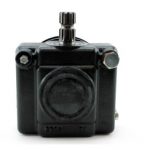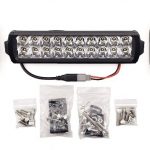Here’s some food for thought concerning lawn mowers as you struggle to keep warm on a cold, winter day.
Being awakened by the loud noise of lawn mowers is not something any resident would want. The most common complaint among lawn mower users is the high noise levels, which often gets them into trouble with the neighbors. For people who want to finish their mowing early in the morning before or in the evening, the disturbance is a great deterrent. Fortunately, lawn mower manufacturers have started looking at reducing the sound levels in the lawn mower engines.
Exposure to high decibels
The National Institute for Deafness and Other Communication Disorders claims that long-time exposure to noise levels over 85 decibels lead to gradual loss of hearing. An average power lawn mower can produce around 90 decibels and a chainsaw about 110 decibels. The best way to reduce this noise of lawn mowers is by controlling the mechanical noise such as the noise caused by the blades and the exhaust noise from the engine.
The challenge lies in reducing the noise levels of lawn mowers without affecting the performance, as performance is the first criterion that people look into. Since there is the danger of loss of hearing with long-term use, reel mowers, which are quiet and are gasoline free form a better alternative. However, the advanced lawn mowers that are being developed at present are even better.
Advanced Technology to the rescue
Noise pollution is one major concern in the use of lawn mowers, especially in areas that are densely populated. Reducing the noise from the engine of lawn mowers can bring down the harmful decibel levels largely as the engine is the main contributor of the irritating noise levels that lawn mowers make.
Recent introduced Briggs & Stratton Corp. lawn mowers promise 65 percent lower decibels due to new technology when compared to the normal gasoline powered engines. This advanced technology is included in riding mowers as well as snow throwers. The changes focus on reducing the volume, tonal quality and sound variables produced by the engine. With the mower, the manufacturers contend that you can even talk, while mowing your lawn, without having to yell to be heard.
Reducing blade noise
The main noise trigger is from the blades and the engine of lawn mowers. While many changes and maintenance conditions have resulted in a quieter engine, there has been very little effort towards resolving the noise issued by the blades. Though still in the research stage, UAB has designed an advanced blade for lawn mowers, which reduces the noise level without affecting the blade performance.
The biometric design of the blade helps in lifting the grass when you cut causing minimal friction. This reduces noise from the blades. The design is derived from the streamlining properties present in nature. This increases the aerodynamic efficiency providing a reliable and a low decibel lawn mowing experience.
According to Protection of the Environment Operations (Noise Control) Regulation 2008, specific periods are mentioned when domestic activities such as operating power tools and other noisy equipment should not cause disturbance to a neighbor. If this is not complied with after being warned by the police, local council officer or an EPA officer, on the spot fine to about $200 for residences and $400 for business can be imposed. Considering the newer advanced models may well be the way out of this situation.
Resources:
https://www.epa.nsw.gov.au/noise/neighbourhoodnoise.htm
https://www.jsonline.com/business/new-briggs-lawn-mower-engine-dampens-the-decibels-b99213573z1-247726981.html
https://www.uah.edu/otc/available-technologies/engineering/silent-lawn-mower-using-split-blade-tubercle-technology
Save
Save
Save
Save
Save
Save
Save
Save
Save
Save
Save
Save
Save
Save
Save
Save







